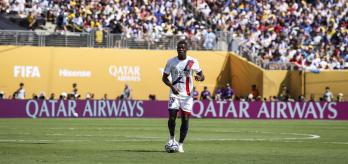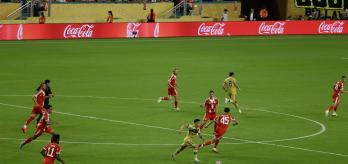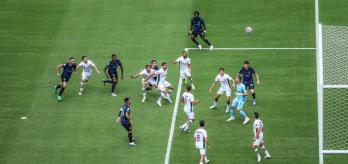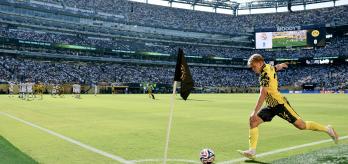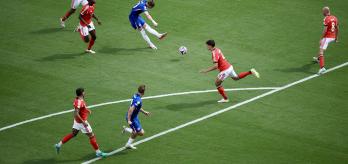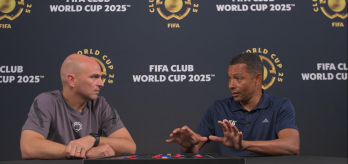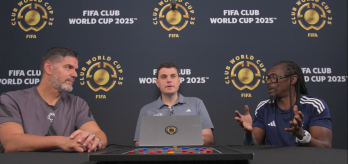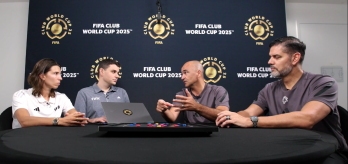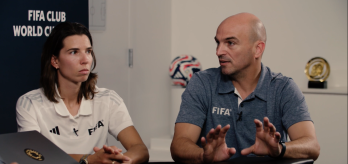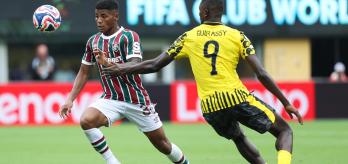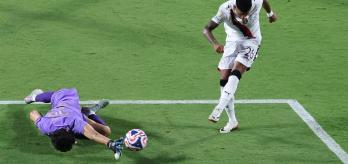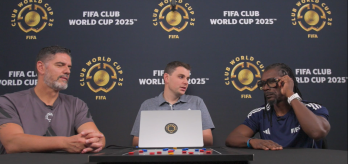Through coordinated movements in central areas, particularly from midfielders and their three centre-backs, FC Internazionale (Inter) provoked their River Plate man-markers to follow them out of position, creating pockets of space between the lines during their group-stage match at the FIFA Club World Cup 2025™.
Cristian Chivu’s side were effective in manipulating their opposition’s man-marking strategy by deliberately drawing the press before exploiting the spaces it left behind. In this article, FIFA Technical Study Group expert Jürgen Klinsmann explains how Inter’s off-the-ball movement disorganised the press and allowed them to either play through the opposition with central overloads or bypass the pressure entirely with line-breaking passes over the press.
“It’s very valuable if you have the nerves, the quality and the passing capability to unbalance the opposition. If you can move the opposition and draw them into positions they do not want to be and make them run, it's tiring. You also need players who can move in relation to where the pressure is being applied and open passing lanes for the player being pressed. That’s how you can unbalance the defensive lines of a team with the quality of River Plate.”
River Plate's High Press
River Plate exerted a high-pressing strategy when Inter were in the low build-up phase, with their three forwards, Miguel Borja (9), Facundo Colidio (11), and Franco Mastantuono (30), all in the top four ranked players in the game for applying pressures in the high-press phase. Interestingly, attacking midfielder Maximiliano Meza (8) was the highest ranked player, with nine pressures, further highlighting River Plate’s intention to exert man-to-man pressure on Inter’s defenders and any midfielder who dropped in to support that build-up. River Plate did not want to allow Inter to break lines centrally.
INTER’S STRATEGY
When building play from their goalkeeper, Inter’s three centre-backs, Alessandro Bastoni (95), Francesco Acerbi (15) and Matteo Darmian (36), frequently rotated with their two centre-midfielders, Kristjan Asllani (21) and Henrikh Mkhitaryan (22), in their defensive third. When River Plate locked on to each player using the man-to-man high-press approach, further up the pitch, on the halfway line, Inter played with four players high, creating potential 1v1s with all four of River Plate’s defenders.
This approach and structure meant there was often a large amount of space between the first and last lines of River Plate’s defensive structure, with Inter midfielder Nicolò Barella (23) often left 1v1 in all that space.
As Klinsmann explains, “Both teams had to win this game and Inter played intelligently by trying to keep possession of the ball at the back for four, five, or even six passes, before looking for the line-breaking, vertical ball to unbalance River Plate’s defence. Because River Plate pressed high, it left huge space open between the front five and back five, and with the quality of players that Inter have in their team, they could play out under pressure and open the space to play into their front players.”
Inter kept two centre-forwards up against River Plate’s two centre-backs, and these two players, Lautaro Martínez (10) and Francesco Pio Esposito (94), played an important role in their team’s capacity to break lines centrally.
The data provided by our Football Performance Insights Team reinforces the volume and concentration of receptions by Inter in the midfield third of the pitch following passes that broke River Plate’s midfield line, with both Martínez and Esposito ranked highest in the game, with nine and seven, respectively.
When pressing high, it is crucial for the pressing team to get close enough to stop the team in possession from progressing the ball, and this must happen with synchronisation, as Klinsmann highlights in the clips below.
“In the UEFA Champions League final, PSG were extremely effective at getting very close to Inter’s defenders when they were playing out, and they really disturbed and affected their ability to break lines. However, River Plate did not always get close enough, particularly after a few passes, which Inter completed intentionally to draw in the pressure.
“When pressing high like that, the centre-backs of the defending team have to be able to get in front of the centre-forwards to win the ball when they are dropping in to receive the line-breaking pass because they have no protection from a screening midfielder. The fact that Inter were able to use a number of different types of passes to break the press made it harder for River Plate, because players, including goalkeeper Yann Sommer, could play balls through, over, or around the press as soon as they got time or space on the ball.”







